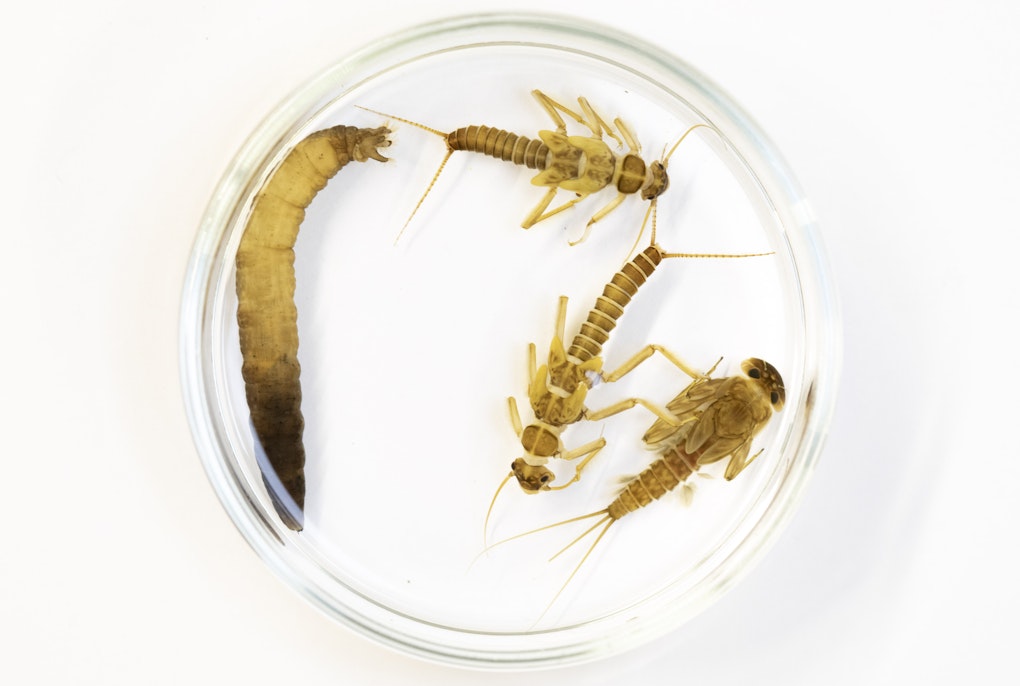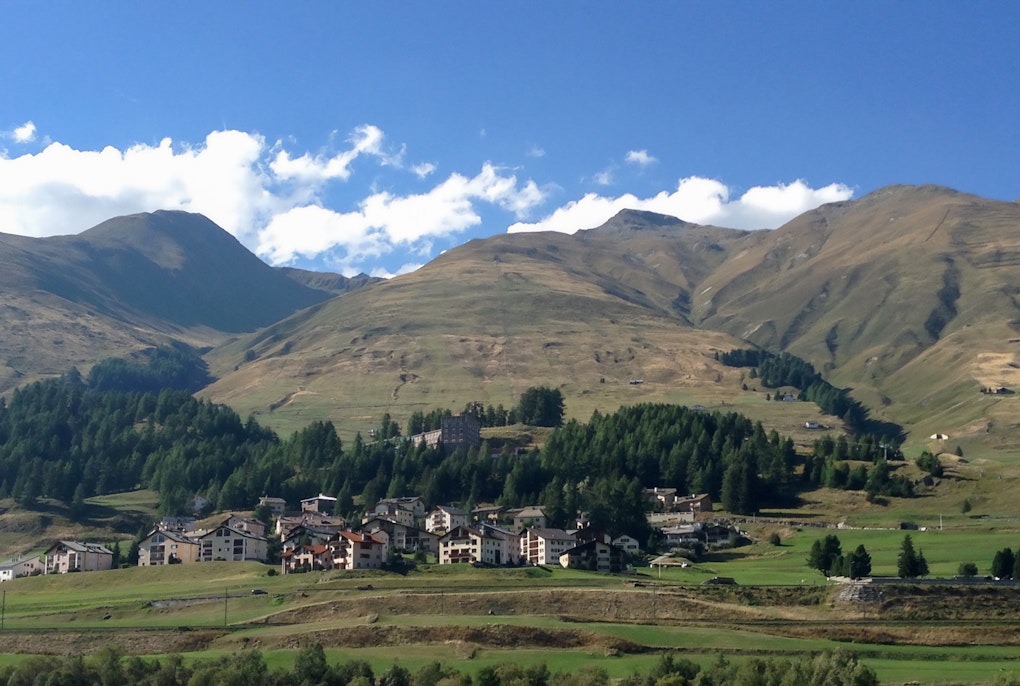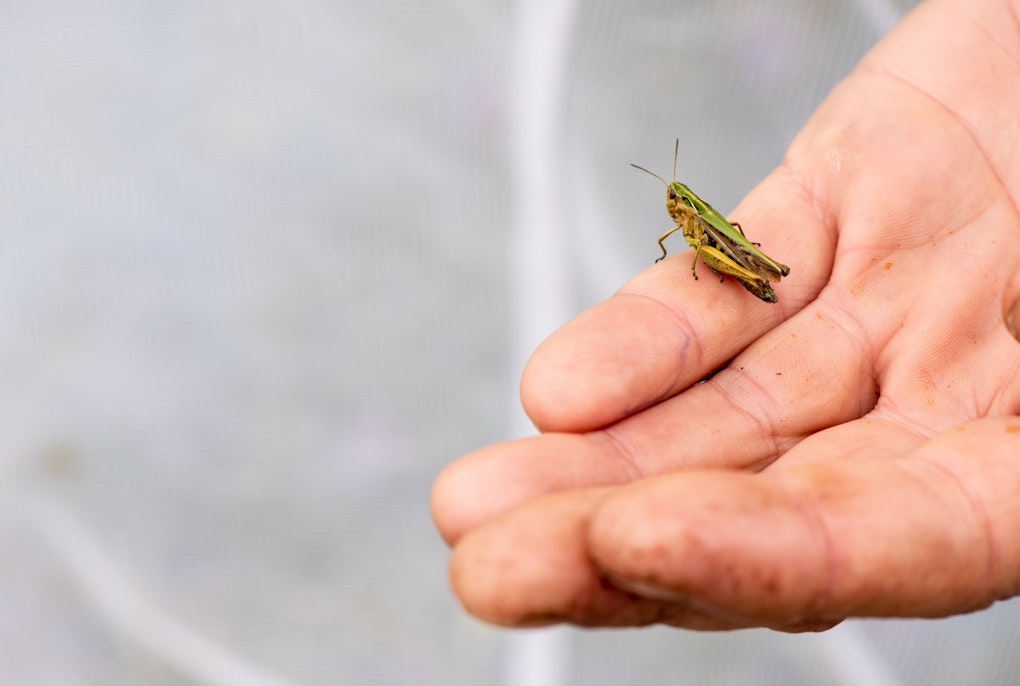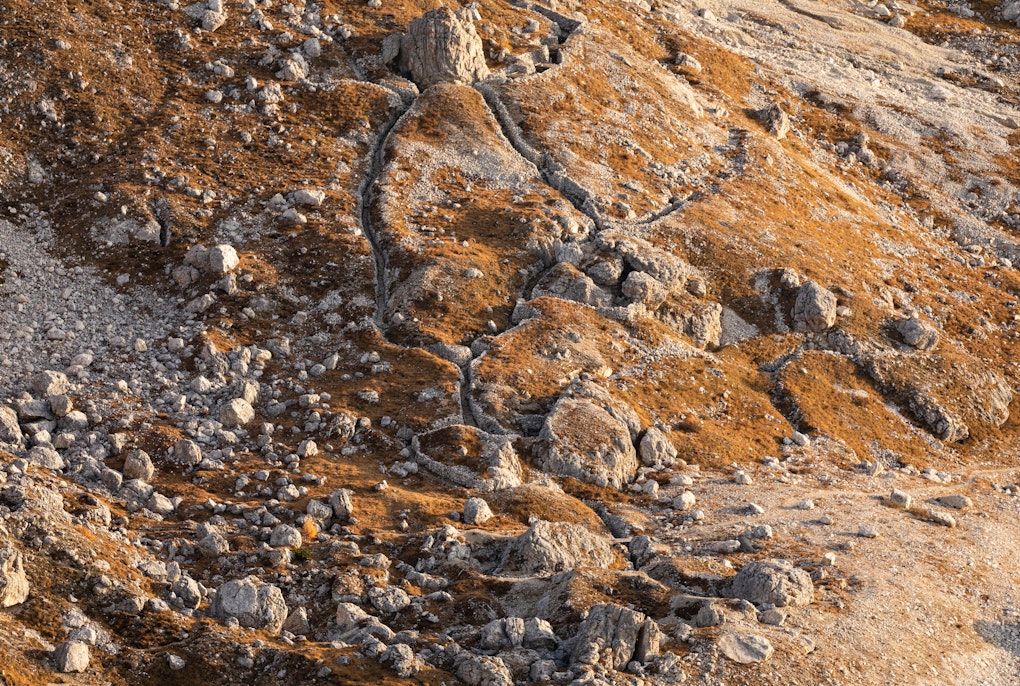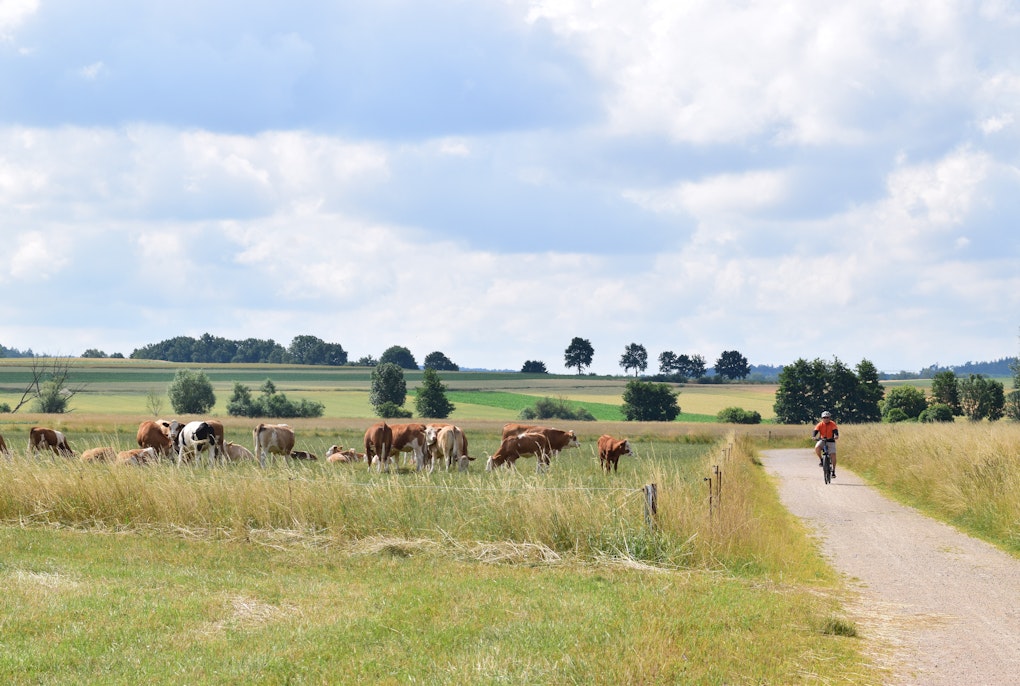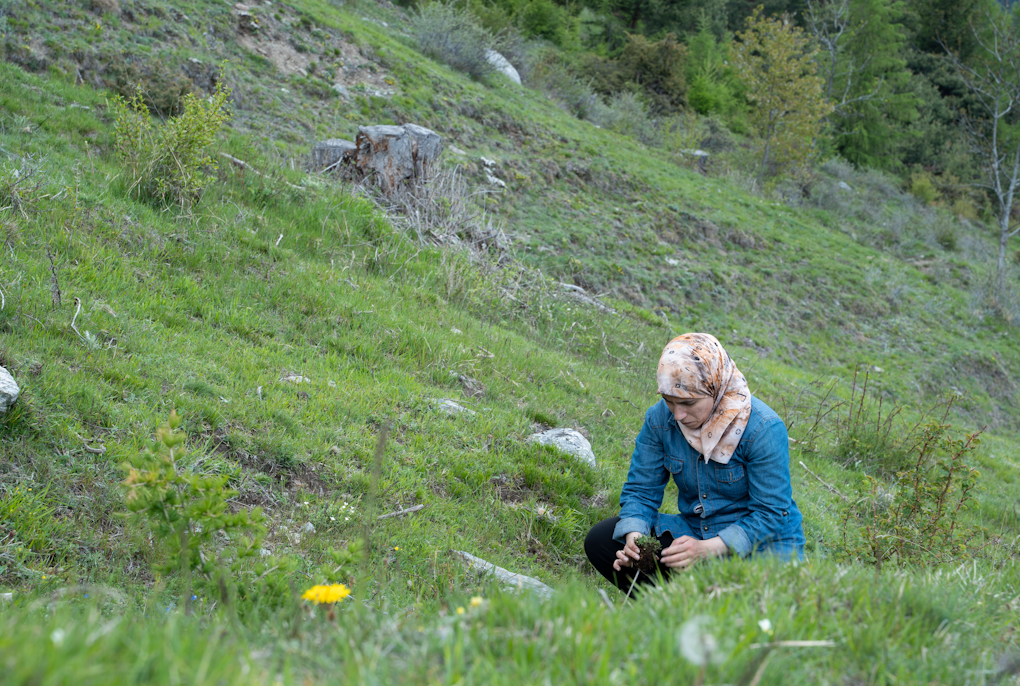magazine_ Article
Studying the woods through photography
Photographing the forest canopy can help protect it
Eurac Research ecologists are using a special photographic technique to study the morphology of the forest canopy and accumulate information about South Tyrol’s woodlands. The goal: to monitor their health and predict their future.
Just before sunset and the sun is sinking behind the outline of the mountains around Graun im Vinschgau/Curon Venosta, and Marco Mina turns his gaze upward to observe the tops of the spruce trees above him. The golden glow that cloaked them until a moment ago has faded. “This is it,” he says, turning back to look through the camera in front of him. The camera is resting on a tripod, with its lens facing the forest canopy. Mina quickly scans its display, nods and brings his finger to the shutter button, pressing it. The aperture opens, exposing and fixing the scene with light that has only a few fractions of a second to record the image of the forest around us. Then darkness descends. The camera screen goes dark for a few moments, then finally lights up again, illuminated by a portrait of the canopy. The seemingly simple image holds a myriad of information. The dark silhouettes of the branches stand out against the bright sky, creating a kind of fingerprint of the forest. This is canopy photography, and Marco Mina, a forest ecologist at Eurac Research, is using it to monitor South Tyrol’s forests to predict their future.
In these photos, branches, leaves and trunks alternate with fragments of sky in a complex tangle of pixels, forming a pattern that varies with each type of forest. If in a forest composed only of beech trees, sunlight filters through numerous vents, coniferous forests tend to brighten at single large openings, similar to ‘skylights’ in a forest roof. To take his photos, Marco Mina uses special photographic lenses called fisheyes. Just like the eye of a fish, these lenses are characterized by having very wide view – in technical jargon, their field angle – which extends to 180 degrees in all directions. By pointing the lenses toward the sky, they capture a view of the entire celestial hemisphere and obtain photographs that, for this very reason, are called “hemispherical.” This photographic technique was introduced in the 1920s by British biochemist Robert Hill, who used it to study clouds. Over time, hemispheric photography found applications in many different fields, including the observation of shooting stars and, since the 1960s, forest ecology. Today, in fact, scholars like Mina use it to obtain images that include all parts of a forest, from the base of the trunks to the top of the canopies. Once the canopy photos are obtained, they are analyzed on a computer. First, a program examines the images and colors the sky white and the canopies black, removing all intermediate shades. For this step to be successful, the photos must have been taken when the sun is hidden by mountains or clouds. In fact, the glare caused by the sun’s rays could risk confusing the program, leading it to mistake the sky for leaves and vice versa.
A photo of the canopy of a beech forest before and after being processed to remove all intermediate shades.Photo: Eurac Research Photo: Eurac Research / Marco Mina
Processing the images, several pieces of information can be derived which include the canopy aperture – how much space the light has to filter through to reach the ground, and the leaf area index, which put simply shows how much of a forest’s area is sheltered by its leaf surface. The leaf area index is also an important indicator of the CO2 uptake capacity of the plants.
The morphology of a forest canopy tells us a lot about what lies beneath it.
Marco Mina, forest ecologist at Eurac Research
But what drives ecologists to study the forest by looking up? “The morphology of a forest canopy tells us a lot about what lies beneath it,” Mina explains. Indeed, crucial processes for the very life of the forest depend on the light that manages to penetrate the trees; first and foremost: photosynthesis. It is no coincidence that beech forests, a species that is very competitive and dominant, are often devoid of undergrowth because their canopy is so closed, the shade that they create, limits photosynthesis and prevents the growth of other plants. Conversely, when a canopy is very open, as in the case of larch forests, sunlight can filter in through the canopies and making the undergrowth lush. In other cases, however, if unshielded by trees, solar radiation can dry the soil out by increasing evaporation rates. The amount of light that makes it through the forest canopy affects every component of the ecosystem, from bacteria to fungi, from plants to the animals that feed on them. For this reason, in reforestation or forest thinning plans, it is important to consider the morphology of the forest canopy. Otherwise, you run the risk of negatively altering the delicate balance between the different elements of these environments. For example, forest thinning operations should encourage an heterogenous environment in terms of lighting conditions, with areas of the undergrowth that are brighter and others that are darker. This would allow a wider variety of organisms to thrive in the undergrowth, from ones that prefer shade and moisture, such as some ferns, fungi and lichens, to those that prefer exposure to sunlight, such as many shrubs. “From this point of view, diversity is the key to a healthy, functioning forest ecosystem,” Mina concludes.
The amount of light that makes it through the forest canopy affects every component of its ecosystem, from bacteria to fungi and from plants to the animals that feed on them.
There are also those who use canopy photography to estimate the greenness of the canopy, that is, how many leaves are green and how many are dry or drying out. In this way it is possible to get an idea of the health of the trees and monitor the impact of climate on the seasonal rhythms of the forest. As Marco Mina explains, the big advantage of using digital photography in forest ecology studies lies in the convenience and the accessibility of the tools used. Today, in fact, most people have a digital camera and there are even researchers and researchers who take photos with their smartphones. For Marco Mina, canopy photography has a dual purpose: to learn about the current state of South Tyrol’s forests and to try to predict their future. In fact, the data that Mina and his group collect feed into two separate study projects, the Biodiversity Monitoring South Tyrol project and the REINFORCE project. The former aims to assess the health of the province’s natural environments and as part of it, also uses data derived from canopy photography to investigate the relationship between the structure of the forest canopy and the degree of biodiversity of the 50 forest sites that are being monitored. For the REINFORCE project, Mina uses mathematical models to make predictions about the future development of forests using data on their current conditions. “We already know that forests will undergo drastic changes because of the climate crisis”, Mina says. “Tree mortality rates will increase due to drought events, and some species will struggle to find suitable environments for their survival, which is what’s happening currently with Norway spruce in South Tyrol. Drought weakens spruce, which is then attacked by insects such as the bark beetle”. With predictions made through mathematical models, however, management plans can be designed to make forests more resilient. “For example, by planting tree species that are more likely to survive and thrive despite changes in climate, as well as by encouraging the growth of forests made up of trees of different ages. That way, if adult trees were to perish for some reason, younger ones could replace them”, Mina concludes. On closer inspection, if the weave of branches silhouetted against the sky is a fingerprint of the forest, then observing its canopy is a bit like reading its hand to predict its fate.
The value of Marco Mina's research recognised by the Province
For his research on forest ecosystems and climate change, Marco Mina was recently awarded a Special Mention in the Junior Research Award. The Junior Research Award given by the Province of Bolzano to researchers at the beginning of their career who have already distinguished themselves in their scientific field and are doing research that will have important scientific success in the future.
Here is the link to the news on the Province’s website: https://news.provincia.bz.it/it/news/lo-junior-research-award-alto-adige-2023-va-a-barbara-gross


